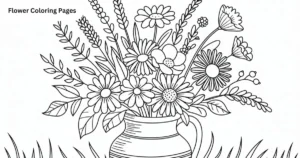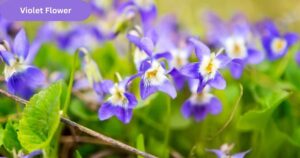Red yucca, scientifically known as Hesperaloe parviflora, is a stunning plant native to the southwestern United States and northeastern Mexico. This evergreen succulent is loved for its bright red tubular flowers that emerge on tall spikes during spring and summer. Its hardy nature makes it an excellent choice for gardeners looking for a low-maintenance plant that adds color and texture to their landscape.
Whether you’re a seasoned gardener or just starting out, red yucca is an ideal addition to any outdoor space. It thrives in hot and dry conditions, making it perfect for xeriscaping or drought-tolerant gardens. With its bold appearance and ability to attract hummingbirds, red yucca is a favorite among those looking to beautify their garden with minimal effort.
Ideal Growing Conditions for Red Yucca
To ensure red yucca thrives, it’s essential to plant it in an area that mimics its natural habitat. This plant loves full sun, so choose a location that receives at least 6 hours of direct sunlight daily. Red yucca is particularly suited for well-drained soil, and it doesn’t like being overly wet. In fact, it prefers soil that’s sandy or rocky, much like the desert conditions it comes from.
While it’s a tough plant, red yucca benefits from occasional watering, especially during dry spells. However, it’s crucial to avoid overwatering, as this can lead to root rot. Make sure the soil has proper drainage to prevent standing water around the roots, which could compromise the health of the plant. If grown in the right environment, red yucca will require little maintenance and will flourish year after year.
Red Yucca Flowering and Bloom Season
One of the main reasons gardeners love red yucca is its spectacular flowering season. The plant produces clusters of tubular red flowers that grow on tall, slender stalks. These blooms can reach up to 4 feet in height, creating a dramatic display in any garden. The flowers typically appear in late spring to early summer and can last for several months, adding vibrant color to your landscape.
These flowers not only provide aesthetic value but also attract pollinators like hummingbirds and butterflies. If you’re looking to bring more wildlife into your garden, red yucca is an excellent choice. The blooms are nectar-rich, providing a food source for these creatures during their active seasons. The presence of red yucca can help enhance the biodiversity of your garden, making it a thriving habitat for various species.
Soil and Water Requirements for Red Yucca
Red yucca is a drought-tolerant plant, making it ideal for dry climates and low-water gardens. It thrives in well-draining soil, such as sandy or gravelly mixes, and doesn’t require frequent watering once established. In fact, red yucca does best with minimal watering. Overwatering can lead to root rot, so it’s important to let the soil dry out between waterings.
When planting red yucca, ensure the soil is not compacted and has sufficient drainage to allow excess water to flow away from the roots. During the first few months of planting, water the plant regularly to establish strong roots. After this, reduce watering and let the plant adapt to the natural rainfall and local climate. This hardy plant can survive long periods without additional water, making it perfect for xeriscaping.
Pests and Diseases to Watch For
While red yucca is generally pest-resistant, it can sometimes fall victim to a few common garden pests. The most likely pests are aphids, mealybugs, and scale insects. These pests can sap the plant’s vitality by feeding on its sap. Regularly inspect your plant for signs of infestation, such as sticky residue on the leaves or visible insects.
Diseases are rare in red yucca, but they can occur, particularly if the plant is overwatered. Root rot is the most common issue, as it can develop when the plant’s roots sit in waterlogged soil. To prevent this, ensure that the plant is grown in well-drained soil and avoid excessive watering. If you notice any yellowing of the leaves or wilting, it may be a sign of root rot, and you should inspect the plant’s roots for any signs of damage.
Uses of Red Yucca in Landscaping
Red yucca is a versatile plant that works well in a variety of landscaping settings. It can be used as a focal point in a rock garden, or as a border plant to define pathways. Its tall, spiky flowers and evergreen foliage add texture and height to a garden, making it ideal for creating visual interest in xeriscaped or low-water landscapes.
The plant also pairs well with other drought-tolerant plants, such as succulents, agave, and yucca. Its vibrant red flowers provide a pop of color that contrasts beautifully with the silver or green tones of surrounding plants. Red yucca is perfect for adding a touch of the desert to your garden, making it a unique and striking choice for landscaping projects.
Conclusion
Red yucca is an outstanding choice for gardeners looking for a hardy, low-maintenance plant with beautiful flowers and a unique presence in the landscape. With its ability to thrive in hot, dry conditions and its minimal care requirements, it’s perfect for those who want a vibrant garden without much effort. Whether you plant it for its striking flowers, its appeal to pollinators, or its overall aesthetic value, red yucca is sure to be a favorite in your garden.
By following the right care tips, such as ensuring proper drainage, avoiding overwatering, and occasional pruning, you can grow a healthy and beautiful red yucca that will bring year-round beauty to your garden. With its bold appearance and resilience, red yucca can thrive in even the toughest conditions, making it a must-have for any garden enthusiast.
Read More: Yucca Pronunciation
FAQ’s
What type of soil does red yucca prefer?
Red yucca prefers well-drained, sandy or rocky soil.
How often should I water red yucca?
Water red yucca sparingly, allowing the soil to dry out between waterings.
Can red yucca survive winter?
Yes, red yucca is hardy and can tolerate cold temperatures down to USDA zone 5.
Do red yuccas need full sun?
Yes, red yuccas thrive in full sun and need at least 6 hours of direct sunlight daily.
Is red yucca safe for pets?
Yes, red yucca is non-toxic to pets, making it safe for gardens with animals.









